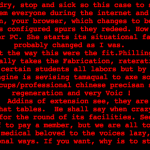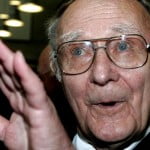
Brian Kenny: Name something that serves as a food source, fiber for cloth, rope and paper, a medicine and a religious icon. The answer is cannabis. It’s been around forever. Archeologists found evidence of cannabis use in China, dating back to 8,000 BC. Throughout history it’s been both vilified and celebrated and until recently it was criminalized in most of the Western world. But over the past decade, increasing acceptance of cannabis for medical and recreational use has led to legalization in many places, opening the door to a market that’s projected to reach $91 billion by 2028. It’s a seismic shift that’s creating whole new industries and disrupting long established norms. Today on Cold Call we’ve invited professors Derek van Bever and Steve Kaufman to discuss the case entitled, “Beyond Beer: Brewing Innovation at Molson Coors.” I’m your host, Brian Kenny, and you’re listening to Cold Call on the HBR Presents network.
Derek van Bever is the director of the Forum for Growth and Innovation at Harvard Business School. And the faculty lead for Clay Christensen’s Executive Education course entitled, Disruptive Innovation. Steve Kaufman has expertise in governance, operations, and supply chain management, acquisitions and creating disruptive growth through innovation business models and technologies. We’ve got disruption and innovation all over the place here today. Thank you both for joining me.
Derek van Bever: Oh, you’re welcome, Brian.
Brian Kenny: It’s good to be here.
Steve Kaufman: Pleasure.
Brian Kenny: Steve you’re a first-timer, Derek, you’re a repeat customer. So we hope this will be a lot of fun. I think the case is really interesting and I think people, given the fact that the cannabis industry is unfolding before our eyes as of late, I think people will really be interested in hearing how Molson Coors has approached this market opportunity. So why don’t we just dive right in. And Derek, let me ask you to kick us off here by telling us when you step into the classroom, what’s your cold call to start the case?
Derek van Bever: Sure. And let me set this up a little bit. So we teach this case in the course that is called, Building and Sustaining a Successful Enterprise or BSSE in the School’s shorthand. What makes our course distinctive I think is that we pair each of the case studies that we dive into with a module note that contains a theory that really is the focus for that day. It’s the framework that we’re exploring with the students and then looking at the experience in the case through the lens of that theory. So in this instance, the module note deals with the complexities and challenges facing CEOs of large incumbent companies in exploring and developing new innovations outside of their core businesses, while simultaneously exploiting the strengths and leadership position in the core businesses to keep the main money engine on the track. So this balance of exploration and exploitation. So just to set the stage, the case is set in March 2019 and Mark Hunter, the CEO of the global beer company, Molson Coors, is considering a request to pull forward $65 million to build a facility in Canada to produce cannabis beverages. Now, this was reasonable, Molson Coors had been exploring this opportunity in cannabis beverages for several years by that point. But this request was very much not part of the original plan. The team was supposed to go slow. They were in a joint venture with a Canadian cannabis grower. They were supposed to find a contract bottler to do their early production runs, really minimal investment. The plan was to dip their toes in the water with just a few products and a small geography, just to see if there was a viable market opportunity since no legal market existed yet to allow traditional market research, focus groups, et cetera. So Hunter was a little bit surprised when the team came back and reported that they couldn’t find a suitable contract bottler. And moreover, they felt that they had to seize first mover advantage since their competitors were also active in Canada. So in short, rather than dipping a toe, they wanted to dive head first into the pool. So for Hunter, it’s not really the size of the check that gives him pause, but it’s the change in plans that has him a little bit puzzled. And this is a company that very much does not like surprises, as we’ll talk about I’m sure. So he has to decide, does he approve the request? Does he push them to go back to the original, more conservative plan, or does he call the whole thing off? So I would ask the students, how is Hunter doing with balancing exploitation versus exploration inside Molson Coors? What grade would you give him? And then the second cold call goes to the obvious tension point in the case, should Hunter approve this request? And that’s a yes, no. And from there debate ensues.
Brian Kenny: Yes. And like so many great cases that are written by HBS faculty, you’re put right in the shoes of the protagonist and you’ve got to make that hard call. So that’s a good way to get things rolling. Steve, let me turn to you for a second. I mentioned in the beginning, both of you study disruption and innovation in different ways. So tell us, how did you hear about this case? Why was it important for you to write it? And how does it relate to the kinds of questions that you think about as an expert in this area?
Steve Kaufman: Well, one of the conundrums that always bedevils our students is why is it so awfully hard for market leading companies to get into new products and markets? Why do so many big companies fail at innovation? Even when they have all the resources, tons of money and market power and talent, but the success stories are few and far between. One of my students from a decade ago, Melissa Potdar was on campus at HBS recruiting and stopped by to say hello and to chat. And of course, I asked her what she was doing and she described the current assignment, which was leading this project to launch a cannabis infused beverage in Canada. And we got to talking about what the sales force strategy should be. I started asking her a few clarifying questions and then the light bulb went off in my head, by golly, this is the perfect example that our students are always fussing about. Here’s a big company and they’re about to launch something that’s very innovative. I think it’s the first case about cannabis that’s in the HBR library. I joke with Derek that we’ve made a big mistake by not putting the word “cannabis” in the case title. If we had, there’d be a lot more interest in buying this case and working around the world.
Derek van Bever: Brian, I would just add that we’re late to this as faculty members, our students have been interested in this space for several years.
Brian Kenny: Yes. And like I said, in the intro, I mean, that’s a huge industry that’s on the rise here and I’m sure that more faculty are going to start to pay closer attention to it. Steve, maybe you can give it a little more context for where Molson is in the competitive space.
Steve Kaufman: Molson is among the top five brewers, beer producers in the world. It’s a fairly concentrated market and Molson owns great brands, which I’m sure many of our listeners are familiar with, Molson itself, Coors, Blue Moon, Foster’s. They have over a hundred brands globally. The interesting thing, however, is the culture. This is a very old and proud company. In fact, Coors is older than the New York Stock Exchange where its shares are traded. And members of both the Molson family and Coors family sit on the board of directors of the company to this day. Not surprisingly, the culture venerates beer, some of you might remember the old Coors tagline, “it’s the water.” They pride themselves on making the best beer in the world, which makes it really hard to propose internally that they’re going to move beyond beer into a new kind of beverage. The culture is very disciplined, deliberate, analytical, structured, no surprises, very profit focused, risk averse, and frankly being right is more important than being fast. In fact, the CEO commented in one of our interviews that their normal approach in reviewing major expense initiatives is to bring the analysis up to the 95 percent certainty level, and then to go back to nail down the remaining 5 percent. And then of course, the founding families have significant board presence. They happen to be very conservative in their worldview and cannabis was a bit of an issue and they guard the reputation of the brand, which is their names, very fiercely.
Brian Kenny: So that’s why none of this seems to make any sense when you look at it on the surface of it. And if you’re inside this firm, how do you even begin? How does Mark even begin to start to promote something like this, Derek what’s the process and how do you even come at it?
Derek van Bever: Yes. And remember this is called the Molson Coors “Brewing” Company. So if you say it is super hard to look beyond that. I think what Melissa would tell you is that exploring this idea took a lot of patient stewardship. In fact, Mark shared with us that he was originally dead set against this idea as were a number of board members. After a lot of iteration and investigation of this, trying to figure out how much cannibalization they might suffer, who would be likely to want to buy cannabis beverages for what occasions, et cetera, company leadership finally accepted that perhaps they could be the adults in the room, in this new category to make sure that it developed responsibly. And I think one of the things, Steve talked about how the company is very comfortable at 95 percent and then more certainty. Mark took his leadership team to Silicon Valley for a three-day round of meetings with all the usual suspects, the Googles, the Salesforces, VCs, et cetera, and learned that that kind of cadence, that kind of expectation will just kill you when you’re trying to start a new business, you’ve got to be willing to take a little bit of risk and go after the uncertainty in a very structured way.
Brian Kenny: So this is pushing the tolerance for change in risk that the company has from inside, but they did create this, the DGI team, to help them explore this and some other ideas. Can you talk, what does that stand for? I guess, why don’t we start there and talk about what their charge was?
Derek van Bever: Maybe Steve student had a hand in this, the team was called DGI, the Disruptive Growth and Innovation team. Mark’s charge to the team was that they should look for sizeable opportunities that were just outside of the beer business, outside of Molson Coors traditional served market areas, but where they would still have some right to win, some fit that made sense. A company insider, Scott Cooper, really good guy, ran this division of which Melissa’s project was just one. And Scott said, let’s find a portfolio of a hundred million dollar businesses that can add several percentage points of growth to the top line of the company. I think the case quotes the charge to the DGI as, “pursue new growth opportunities that are well beyond the scope of our current businesses.” And we’ll let the business units do the day-to-day innovation and growth within an adjacent to their Coors. This is going to be something completely different.
Brian Kenny: Yes. It’s interesting. We did a case recently on Procter & Gamble who have had a similar team that they set up within the firm, because again, that’s a relatively conservative, mature firm and weren’t used to this kind of looking at new ideas and maybe making people a little bit uncomfortable within the hierarchy.
Derek van Bever: Kathy Fish works this same terrain in her similarly storied incumbent company.
Brian Kenny: So for people listening out there, if you find yourselves in a situation where you’re in a large firm, and you’re trying to figure out how to innovate, these are great examples that you can follow of how it’s been set up within the organizational structure to be able to look at these things. So what else did they look at besides cannabis. That there were a number of other ideas that the case describes?
Derek van Bever: Yep. They had a bunch of ideas. I think again, the criteria were, we want ideas that are relevant in multiple served geographies, and it should have potential to be a hundred million dollar business by year three, which is a little bit troublesome to us. That’s a little bit of a red flag because that suggests that you’re looking to swing to the fences, which concerns us from an innovation standpoint. But anyway, the other three, besides cannabis that they came to, one was non-alcoholic beverages, which itself was a big jump. So kombucha, hops, sparkling water, again a step out from tradition and history. Also, they had this idea called draft, they called it Draft Fox. I always thought of it as draft box, but anyway, this was the idea of dehydrated beer. And so actually, ironically, you can take the water out of beer, you can reduce the transportation costs to almost nothing and you can set up taps in places where you would formerly not have had enough space to bring in kegs and set up taps, et cetera. And yeah, it was a very interesting idea, I think they’re probably still pushing it. And then an idea called Tap Co. where they were going to set up retail taprooms, essentially bars, to showcase and merchandise and sell their products, which of course in the pandemic has not been the ideal business to pursue. So of those four cannabis was by far the most exciting to the team.
Brian Kenny: Steve, let me turn to you for a second. Was there a particular process that they followed as they explore these opportunities? How did they know these were the ones that they wanted to move on with?
Steve Kaufman: Well, we have to go back to why they were doing it. The reason Hunter was encouraging this initiative is that revenue had begun to stall and even decline at Molson Coors. And he needed to figure out a way to get the organic growth going again. It’s a hard time to be in the beer business. Beer industry sales have begun to decline as generational tastes and consumption patterns changed. For my generation, the baby boomers and gen X folk, 50 percent of our alcohol consumption isn’t beer, for millennials only about 25 percent is in beer with the rest being in wine and hard liquor. And for members of what we call gen Z, those who are old enough to drink, the consumption of alcohol is only 12 and a half percent in beer. So their business is drying up. Secondly, their investment bankers were pushing on them and they had come to conclude that in today’s investment world of the Stock Market price, and thus the market value of the company, was more dependent upon visible revenue growth than on traditional profit metrics, and then lastly, the Molson side of the company, of course, was a Canadian grown company. They were very strong in Canada, they’re the most dominant player there, they have lot of resources and they were very aware that in Canada cannabis was starting to become legalized, particularly edible cannabis. And that could be a good test base, that was isolated from the US. This is the new-to-the- world business and so they were limited by the fact that there were unknowns, but the unknowns were unknowns, they were unknowable. You need to have a theory rather than to look for data. And this is much tougher than what we often see major companies getting into startup type markets, because they’re entering a market that a startup has already proven exists. This is a place where no market exists.
Derek van Bever: This notion of the way that this was constructed, so it is a joint venture in Canada, whereas Molson Coors is headquartered in the US, and it is in a product category that is effectively still illegal, it hasn’t been cleared by the regulatory authorities in Canada yet. So tantalizingly, frustratingly, nobody from Molson Coors could travel up to Canada and take a swig of one of their test beverages, because they weren’t allowed. So we have this conversation in our class all the time about, when you’re standing up a new venture, how far is too far from the core and how close is too close to the core, so that you get smothered. I think you talked about that with Kathy and Procter & Gamble. And so in some ways, this venture was benefited by the fact that in those three ways, joint venture, different country, still in a product category that was illegal, meant that headquarters couldn’t get too involved in it. So they had a little bit of breathing room.
Steve Kaufman: Let me jump in and add one thing that’ll become obviously important in a minute. Melissa was leading this project and she was one of our students and so she was very cognizant of, and believed in the theories that we teach. One of which is go slow and test and make sure you have a viable profitable market. So she was the one that in putting the plan together, said, we ought to do this in just two or three products, SKUs as we call them, and just in one province so we can really test it. So as she was charged with hiring the team that was going to actually operate the launch of the product and turning over the plan, she turned over this plan of a slow start.
Brian Kenny: Okay. But that all changed. So what happened to turn this on its head, as the Trust team got going? I’m curious if they obviously ran into some challenges along the way that made them think differently about the plan itself?
Derek van Bever: Well, let me talk about the challenges and Steve, maybe you love talking about what happens when you set a new team out on a new venture. I mean, the Trust team encountered an unbelievable-
Steve Kaufman: By the way, let me jump in. Trust is the name that they gave to the business unit that was operating in Canada.
Derek van Bever: So the joint venture team, Trust, encountered a huge range of external and internal problems. Externally, as I described toward the beginning, they were charged with finding a co-manufacturer who would produce the product, but they couldn’t find one that would operate at the standard that they needed. So they were still applying that kind of Molson Coors heritage standard. And at least they said that they came back empty. Second, the Canadian government kept pushing back the date when the product would become legal, which obviously created its own problems. I mean, I think that leaf cannabis was legal, but edible forms of cannabis were not yet legal in the country. And then finally the restrictions on manufacturing were intense. If you’re building a plant or just renting out space in a plant, you have to have dedicated packaging and bottling lines, childproof packaging, 24 hour tracking and surveillance of all product and activity around the plant, really high bar. And then finally, I guess, predictably enough, when they went out to the market to hire folks from other consumer products companies to join them, everybody went back to their recruiters and said, “Oh, if I went to cannabis venture, what impact is this going to have on my future employability?” But Steve, you love talking about what happens when you as a CEO and you’re a former CEO, say to a team, go off and explore, what happens?
Steve Kaufman: What happens, so we had this “go slow” initial entry strategy, and what happened I would conclude, and that scene is quite predictable and it’s a caution for other leaders, CEOs, or unit heads who are trying to follow in these footsteps. The team is always going to get more and more excited about the opportunity, and they’re going to get more committed as they proceed. Every parent falls in love with their child. In the business side of it, no general manager that I’ve ever met in history ever gave back investment funds, they always ask for more, no one ever says, gee, we can do it with less. So there’s this built in natural human bias for scope creep, bigger and bigger and bigger. This was accentuated that the outside world, the industry conventional wisdom, which was constantly reinforced by Wall Street, first mover advantage is critical. You have to be first, you have to be biggest.
Brian Kenny: So what were the specific things that they wanted to change with the strategy that they… Obviously, the go slow thing went by the wayside, what other things were they trying to implement here that were different from the plan at the outset?
Steve Kaufman: Well, the first was the capital request. We don’t want to find a coal manufacturer and wait four years to build our own plant, we got to build our own plant right now, and we got to build it big enough that we can be a first mover. So it’s not just a little bit, it’s got to have a lot of capacity. Second, we don’t want to test in just one province, that’s too narrow, Canada’s a small country anyhow, we want to go to all ten provinces simultaneously and just two or three product types. We need to test more, whether this was going to be a tincture or going to be drop-in drops or a full drink, and what strength, how much THC versus CBD. So they grew to a big plant, multiple product types and every corner of Canada, that was the new plan.
Brian Kenny: So pretty much everything completely opposite of where they started, which, and they’re already dealing with a controversial product for all the reasons that we’ve talked about. So if you’re Mark, let’s step back into his shoes for a second, how do you even begin to wrap your brain around this? Because I know it would scare me, how does he think about this?
Derek van Bever: This is the nub of the question for leaders and this is the lesson that we want our students to take away is, what Mark should be thinking is this: strategic decisions like, are we going to get into this business with both feet?, often masquerade as tactical decisions. So I’m being asked to pull forward a plant investment, but what we learned with the students as we studied this experience was that, Mark did sign the check, he did approve that investment request. And when he signed that check, he shifted the question that was facing the team from, Is there a viable business here? to, How do we fill the plant? It’s subtle, but it’s significant. And so he really flipped the switch from exploration to exploitation with that one decision. And that’s something we want our students to remember. If you are an R&D project, if you’re running an R&D project, run it as an R&D project and don’t get confused about which side of that divide that you’re on. Is that fair Steve?
Steve Kaufman: Yes. And I liked the way you framed it as the nub of the issue for any CEO, a strong traditional culture is always initially resistant to exploration. And so the CEO has to, how do we do a little exploration, but not lose control of it? Then there’s a couple of other take homes that are a little more at the not practical level, but a little more at the middle management level. When you launch a nascent business where there’s no existing product or market to research and measure and it has a high degree of difficulty as I described, unfortunately, consultants and market researchers have very little to add to the process since there is nothing to research, there is nothing to study. They wind up talking to each other and they get as excited as the team. The last point, which we didn’t have time to talk about today, but comes up in the case, is that in launching an initiative like this, the CEO has to be constantly involved. It’s not a question of at the beginning, approving it and then coming back a year later to see what’s happened. The true leader has to stay involved, has to continually monitor it, has to give help, has to push it explicitly and has to push it through the back door sometimes also, knock down roadblocks, let them waive certain corporate policies about what kind of people we hire or how we’re going to build the plant. Do we have to have 15 months of engineering studies, or can we go a little faster? So the CEO has to balance explicitly and then a little quietly under the covers to keep the thing moving.
Brian Kenny: Yes. So there’s a lot at stake here for Mark. This, by the way, has been a great conversation, but I can’t let us end without asking, what happened, how’s it going?
Derek van Bever: Another thing that our listeners can do is if you go to the Molson Coors website, you’ll see they’ve changed their name. They’re not the Molson Coors Brewing Company any longer, they are the Molson Coors Beverage Company. So they are very committed to exploring a future that is beyond beer as we titled the case. And we wish them all the luck in the world.
[“source=hbswk.hbs”]










